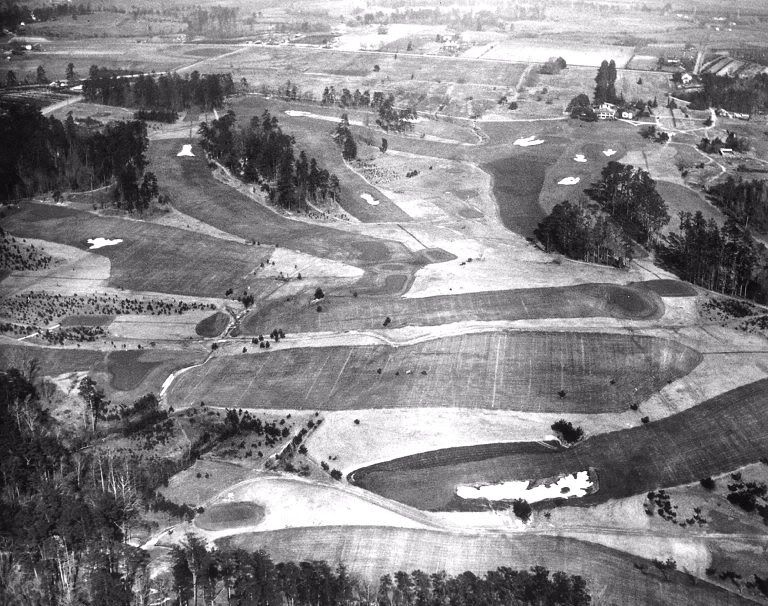Tom,
Maybe economics was an issue at other courses, and maybe a few plans were canceled at ANGC, but it would seem the ANGC course was designed and constructed without being limited by economics.
While having a few bunkers, the bunkers were enormous. The bunkers required excavation of the sticky Georgia clay, and as mentioned in Byrdy's book, sand was imported from the Atlantic coast. Look at the fairway bunker on the 14th that I previously mentioned in this thread. I often post this nice oblique aerial, and it was nicked last year by national publications.
How much larger would the 14th bunker have been if economics was not a problem ?
Also consider that the bunkers on 1st, 2nd, 4th, 6th, 9th, 10th, 14th, and 18th were also very large. The centerline bunkers for the 2nd and 8th were not small either.
Now consider the size of the greens. The greens were enormous, and would have cost much more to build, and then grass, and maintain. The greens had the massive undulations adding to the cost. Not to mention the cost of building the surrounds of the 8th green.
And the fairways were very wide as discussed elsewhere and shown in the photograph. This required a lot of work to seed and maintain.
The greens and fairways were twice the size of the typical course as mentioned in Byrdy's book.
Then the club installed a 'state of the art' sprinkler system.
Where is the economy of the design and construction ?
The wide fairways, large undulating greens, and a few more centerline bunkers in the early days do remind you of the TOC. Having to be in the proper fairway location for the day's hole location does strike a chord of the old course.
The other plans for another course or tennis may have been axed.
Where was the economy of the construction of the ANGC course ?
From Byrdy's book, the 'as constructed' bunkers are more numerous or larger than shown in the more finished 1932 golf course plan.
This 1932 plan did not have centerline bunkers at the 2nd and 8th. A bunker was added at the 9th. The bunker at the 14th was greatly enlarged. Given this was a 1932 plan, and looks rudimentary to a certain extent for such detail, the differences mentioned are there to see.

Others, nick away.